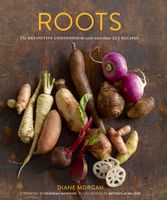Advertisement
History and Lore
Appears in
By Diane Morgan
Published 2012
A member of the mustard family (Brassicaceae), the rutabaga is a cross between a turnip and a wild cabbage. It is a relatively young root crop, originating in the late Middle Ages, most likely in either Scandinavia, Bohemia, or Russia. The first written account of the rutabaga dates to 1620, when Swiss botanist Gaspard Bauhin noted that the wild roots were flourishing in Sweden. Rutabagas get their name from a Swedish word, rotabagge, or “root bag,” though in some English-speaking countries, including England and Australia, they are called swedes. Other common names include Swedish turnip, neep (Scotland), and turnip-rooted cabbage, as it was known in the early 1800s in the United States.

